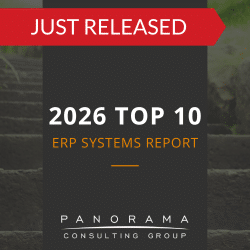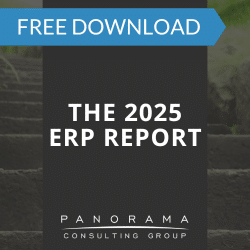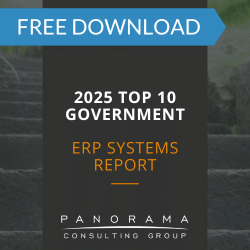- Silent ERP user resistance often goes unnoticed, yet it can quietly undermine adoption and long-term system value.
- Organizational change resistance doesn’t always look like open defiance—sometimes it’s disguised as disengagement.
- One of the most overlooked forms of resistance to digital transformation is users attending meetings and nodding along, while withholding the input that drives real progress.
- Addressing hidden forms of ERP resistance early requires behavioral analytics, safe feedback channels, and leadership accountability.
The project manager announces that everything’s on track with the ERP implementation, but somehow, the air feels heavier than it should. People nod. A few ask questions. But no one’s really leaning in.
This is the kind of resistance that rarely shows up in dashboards or stakeholder reports. It’s not the kind that storms out of training sessions or floods the help desk with angry emails. This form of ERP user resistance is far subtler.
It’s organizational change resistance wrapped in silence, and if unaddressed, it can quietly erode the value of your ERP investment.
Change Management Case Study
The client recognized their need for more comprehensive change management, so they asked us to fill in the gaps. We developed a robust communication plan to supplement the vendor’s communication approach.
The Roots of ERP User Resistance
ERP user resistance is frequently misunderstood. Executives expect it to appear in obvious ways—vocal opposition, open pushback, or missed deadlines. In reality, the resistance that undermines digital transformation is often quiet and slow-moving.
Here are five silent expressions of ERP resistance that we’ve seen in our project recovery engagements:
1. The Disengaged Power User
You might recognize them:
- The spreadsheet master who knows the legacy system better than the back of their hand.
- The unofficial process expert whom everyone turns to when something breaks.
They attend all the ERP meetings and appear engaged , but they withhold their real expertise—the shortcuts, the workarounds, the tribal knowledge. To them, the new system threatens not just comfort but identity.
Unfortunately, without their full buy-in, key details about how work actually gets done stay hidden, and new workflows are misaligned with day-to-day operations.
For example, a city government might rely on a senior payroll clerk to manage dozens of off-system calculations that help ensure labor compliance. If that knowledge isn’t transferred into the new ERP system, those calculations vanish, causing payroll errors that damage trust and prompt manual rework.
2. The Middle Manager’s Strategic Silence
Middle managers sit in a difficult position. They’re expected to champion change, yet they’re also held accountable for hitting short-term performance targets (which the change will temporarily disrupt).
When digital transformation threatens team stability or introduces temporary inefficiencies, middle managers may opt for subtle sabotage:
- They delay decisions.
- They deprioritize ERP tasks.
- They withhold key feedback during requirements gathering.
- They steer their teams to follow legacy processes.
They’re not vocally opposing the project, so no one flags them as a risk, but their departments drag the implementation down one delayed workflow at a time.
3. The “Yes” Without Action
When stakeholders nod along during steering committee meetings, it’s tempting to interpret agreement as alignment. However, a “yes” isn’t always a commitment. In some cases, it’s a convenient way to avoid confrontation.
An example of this form of resistance is departments that agree to adopt the new ERP system but continue using legacy systems after go-live. Our enterprise technology consulting firm has seen everything from spreadsheets used to override inventory numbers to entire purchasing teams ignoring system workflows in favor of email-based approvals.
4. The Training Opt-Out
Resistance to digital transformation often crystallizes during training.
Even here, the resistance can be subtle. Many users quietly tune out, attend sessions while multitasking, or fail to apply what they’ve learned. Some never even log in until the day before go-live.
For example, an industrial manufacturer might design targeted training for a new supply chain management system. However, if users fail to internalize new workflows, purchase orders may be entered incorrectly and inventory levels may misalign with demand. Meanwhile, executives question the SCM system rather than the users.
5. The Passive Data Gatekeeper
ERP systems thrive on clean, reliable data. However, in many implementations, the people responsible for supplying that data act as bottlenecks:
- They delay responding to requests.
- They question the relevance of data fields.
- They fail to flag critical inaccuracies.
On paper, their role is supportive—providing data, answering system-related questions, and ensuring readiness. In practice, their subtle resistance shows up in delayed responses, incomplete datasets, and quiet refusal to prioritize ERP-related tasks.
How Leaders Can Minimize Organizational Change Resistance
Here are five practices for executive teams who want to surface, understand, and address silent forms of resistance before they derail digital transformation:
1. Treat Adoption as a Behavior, Not a Milestone
ERP implementation often focuses on go-live dates and system readiness, but real transformation depends on sustained behavioral change.
Our business software consultants often advise clients to focus on measuring post-go-live behaviors:
- How employees use the system
- Where they bypass it
- What decisions are still made outside the platform
Behavioral analytics, usage audits, and process compliance tracking can help surface silent resistance that traditional project metrics overlook.
For example, a utilities provider might use behavioral analytics to detect red flags, such as technicians logging work orders in batches instead of updating jobs in real time. These usage patterns reveal where the system is being underutilized, even if no one is complaining. This gives leadership the insight to correct issues before they hit revenue, compliance, or customer satisfaction.
2. Create “Safe Zones” for Pushback
Silence often results when users feel they have no safe channel to express doubt. That’s why it’s critical to create intentional spaces where honest feedback is encouraged.
For instance, change advisory groups, cross-department feedback meetings, and anonymous surveys can give employees space to voice concerns without fear of judgment.
When employees see their feedback is taken seriously, they begin to believe that speaking up makes a difference. This encourages them to share what they would otherwise keep to themselves, allowing you to uncover issues before they become long-term adoption problems.
3. Reframe Resistance as a Commitment to Excellence
Not all resistance is rooted in fear. Sometimes, it reflects a desire to protect quality, continuity, and customer satisfaction.
Leaders who view resistance as misaligned passion—rather than defiance—are better positioned to channel it. When you ask, “What are you trying to protect?” instead of “Why are you resisting?”, the conversation shifts. People stop hiding and start contributing.
4. Hold Middle Management Accountable for Driving Adoption
Middle managers shape how teams interpret and respond to organizational change. When their messaging is inconsistent or their behavior reveals misalignment, it cascades across your organization.
We recommend making cultural leadership an explicit part of every manager’s role during the ERP implementation. Define clear responsibilities around how they should drive training participation and reinforce system usage. Then, monitor each department’s engagement:
- Are teams attending and participating in training?
- Are they contributing to process design and configuration decisions?
- Are they using the new system consistently after go-live?
5. Anchor Communication in Meaning, Not Mechanics
ERP resistance thrives when people don’t understand why change is happening and how it connects to the organization’s goals.
For example, overreliance on technical language and software features can leave employees wondering why the change matters, who it benefits, and what’s at stake if it fails.
Our change management consultants often tell clients to communicate transformation as a story—one that connects operational change to strategic intent. When people understand how the system helps reduce customer churn, improve decision-making, or streamline service delivery, they become part of the overall mission.
Learn More About Change Resistance
C-level executives often assume resistance will appear in familiar ways, but the most damaging forms of resistance in ERP and digital transformation projects are usually invisible.
These subtle forms of ERP user resistance gain power precisely because they’re misunderstood. Executives move forward thinking buy-in has been achieved, while beneath the surface, momentum stalls.
The answer lies in leadership—particularly leadership that treats cultural friction as a predictable challenge that deserves early, strategic intervention.
Our organizational change management consultants can help you surface resistance early to ensure your ERP system delivers value. Contact us below for a free consultation.














